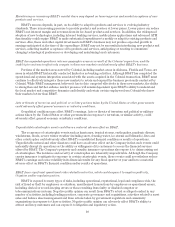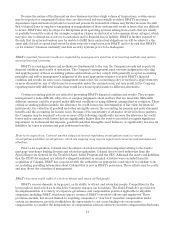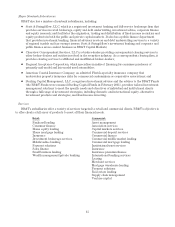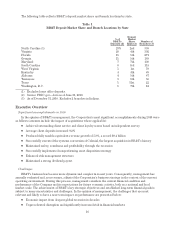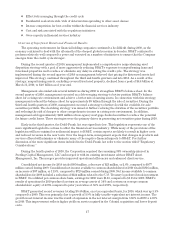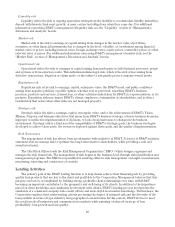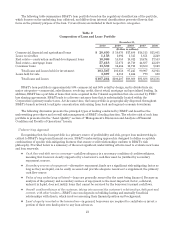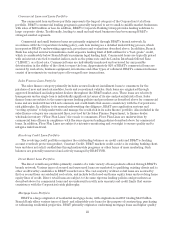BB&T 2010 Annual Report Download - page 20
Download and view the complete annual report
Please find page 20 of the 2010 BB&T annual report below. You can navigate through the pages in the report by either clicking on the pages listed below, or by using the keyword search tool below to find specific information within the annual report.Liquidity risk
Liquidity risk is the risk to ongoing operations arising from the inability to accommodate liability maturities,
deposit withdrawals, fund asset growth, or meet contractual obligations when they come due. For additional
information concerning BB&T’s management of liquidity risk, see the “Liquidity” section of “Management’s
Discussion and Analysis” herein.
Market risk
Market risk is the risk to earnings or capital arising from changes in the market value of portfolios,
securities, or other financial instruments due to changes in the level, volatility, or correlations among financial
market rates or prices, including interest rates, foreign exchange rates, equity prices, commodity prices, or other
relevant rates or prices. For additional information concerning BB&T’s management of market risk, see the
“Market Risk” section of “Management’s Discussion and Analysis” herein.
Operational risk
Operational risk is the risk to earnings or capital arising from inadequate or failed internal processes, people
and systems or from external events. This definition includes legal risk, which is the risk of loss arising from
defective transactions, litigation or claims made, or the failure to adequately protect company-owned assets.
Reputation risk
Reputation risk is the risk to earnings, capital, enterprise value, the BB&T brand, and public confidence
arising from negative publicity or public opinion, whether real or perceived, regarding BB&T’s business
practices, products and services, transactions, or other activities undertaken by BB&T, its representatives, or its
partners. Reputation risk may impact BB&T’s clients, employees, communities or shareholders, and is often a
residual risk that arises when other risks are not managed properly.
Strategic risk
Strategic risk is the risk to earnings, capital, enterprise value, and to the achievement of BB&T’s Vision,
Mission, Purpose, and business objectives that arises from BB&T’s business strategy, adverse business decisions,
improper or ineffective implementation of decisions, or lack of responsiveness to changes in the business
environment. Strategic risk is a function of the compatibility of BB&T’s strategic goals, the business strategies
developed to achieve those goals, the resources deployed against these goals, and the quality of implementation.
Risk Governance
The management of risk has always been an enterprise-wide initiative at BB&T. It is part of BB&T’s mission
statement that we manage risk to optimize the long-term return to shareholders, while providing a safe and
sound investment.
The Chief Risk Officer leads the Risk Management Organization (“RMO”) which designs, organizes and
manages the risk framework. The management of risk begins at the business level through risk identification and
management programs. The RMO is responsible for ensuring effective risk management oversight, measurement,
monitoring, reporting and consistency of controls.
Lending Activities
The primary goal of the BB&T lending function is to help clients achieve their financial goals by providing
quality loan products that are fair to the client and profitable to the Corporation. Management believes that this
purpose can best be accomplished by building strong, profitable client relationships over time, with BB&T
becoming an important contributor to the prosperity and well-being of its clients. In addition to the importance
placed on client knowledge and continuous involvement with clients, BB&T’s lending process incorporates the
standards of a consistent company-wide credit culture and an in-depth local market knowledge. Furthermore, the
Corporation employs strict underwriting criteria governing the degree of assumed risk and the diversity of the
loan portfolio in terms of type, industry and geographical concentration. In this context, BB&T strives to meet
the credit needs of businesses and consumers in its markets while pursuing a balanced strategy of loan
profitability, loan growth and loan quality.
20


